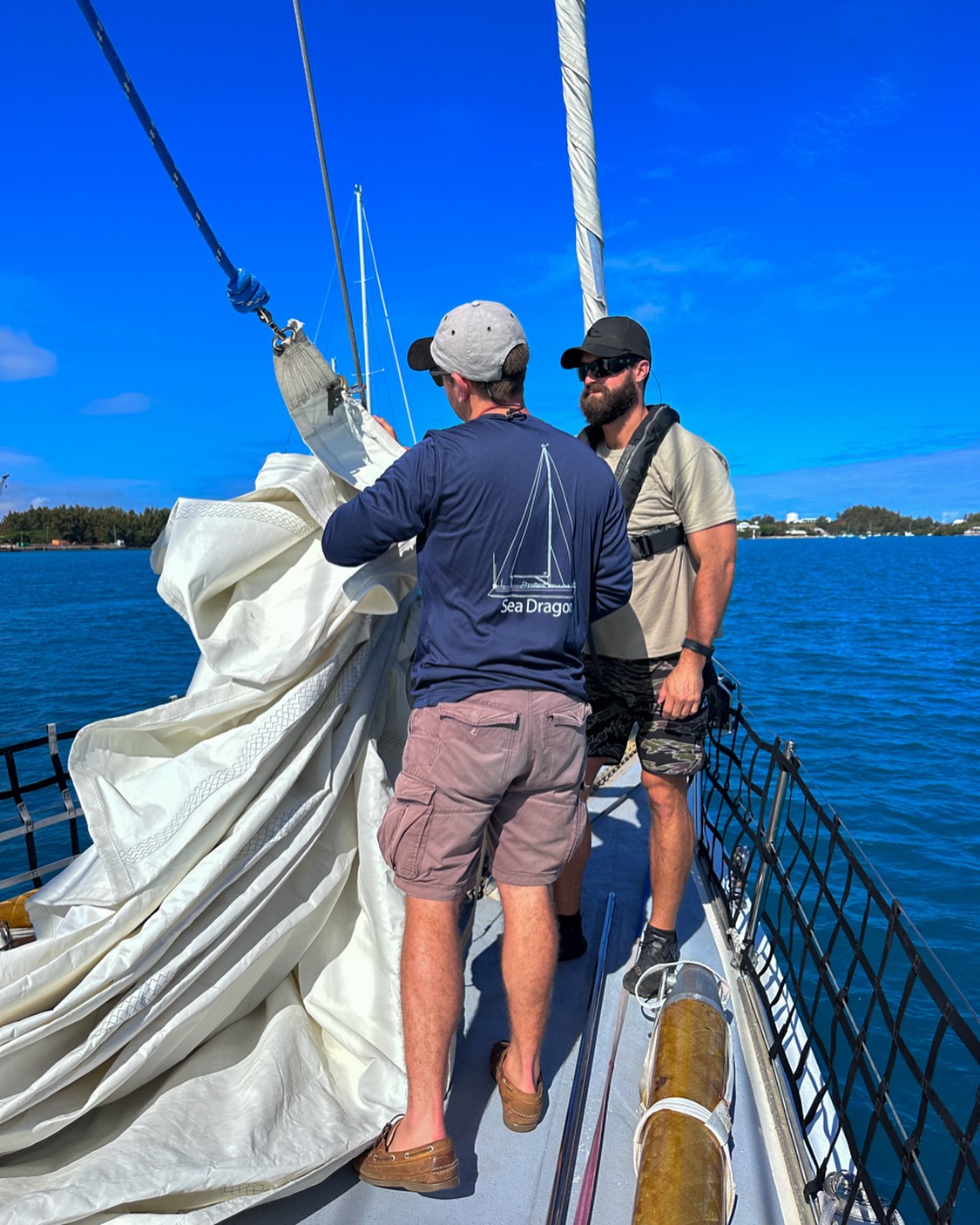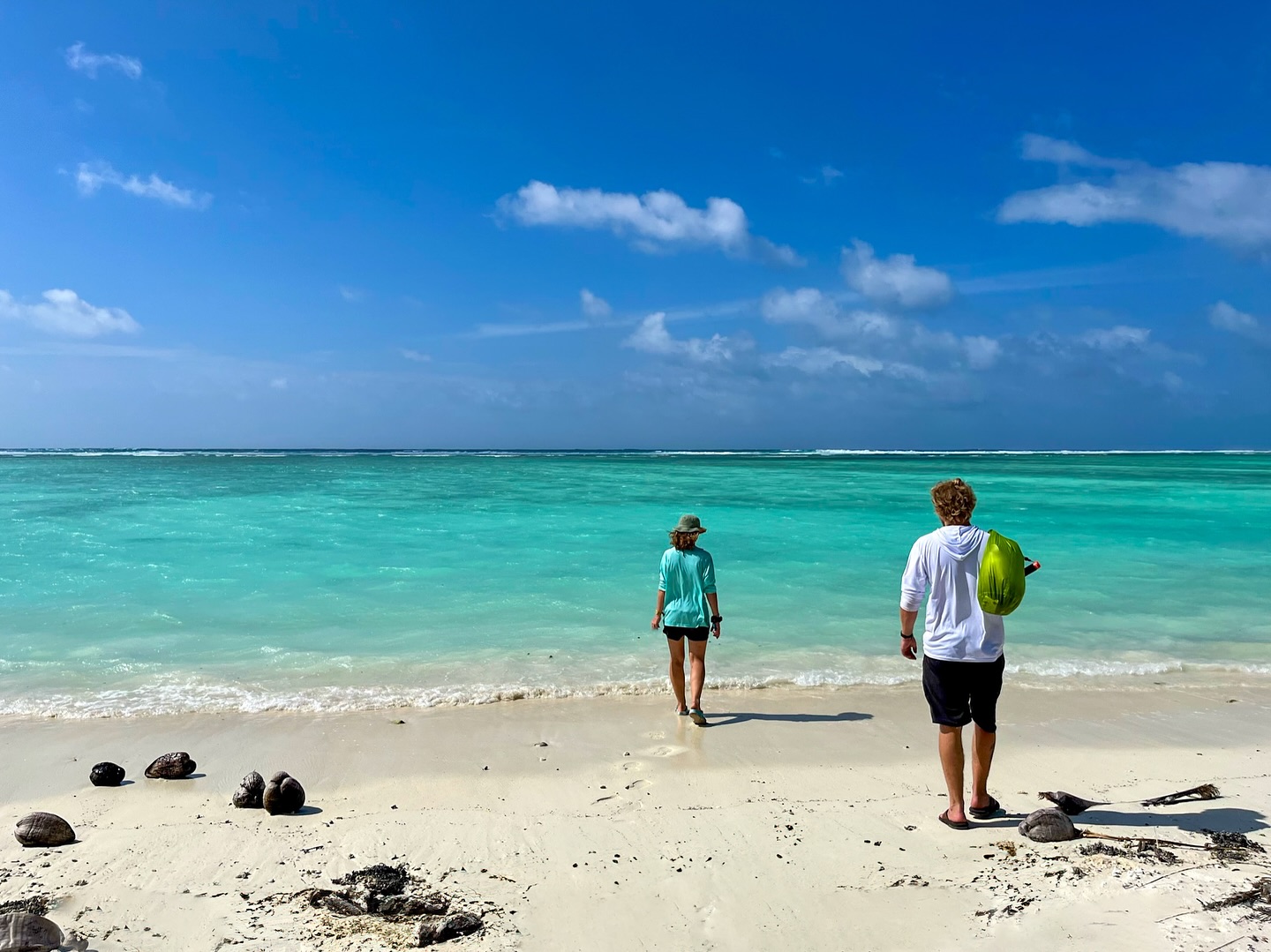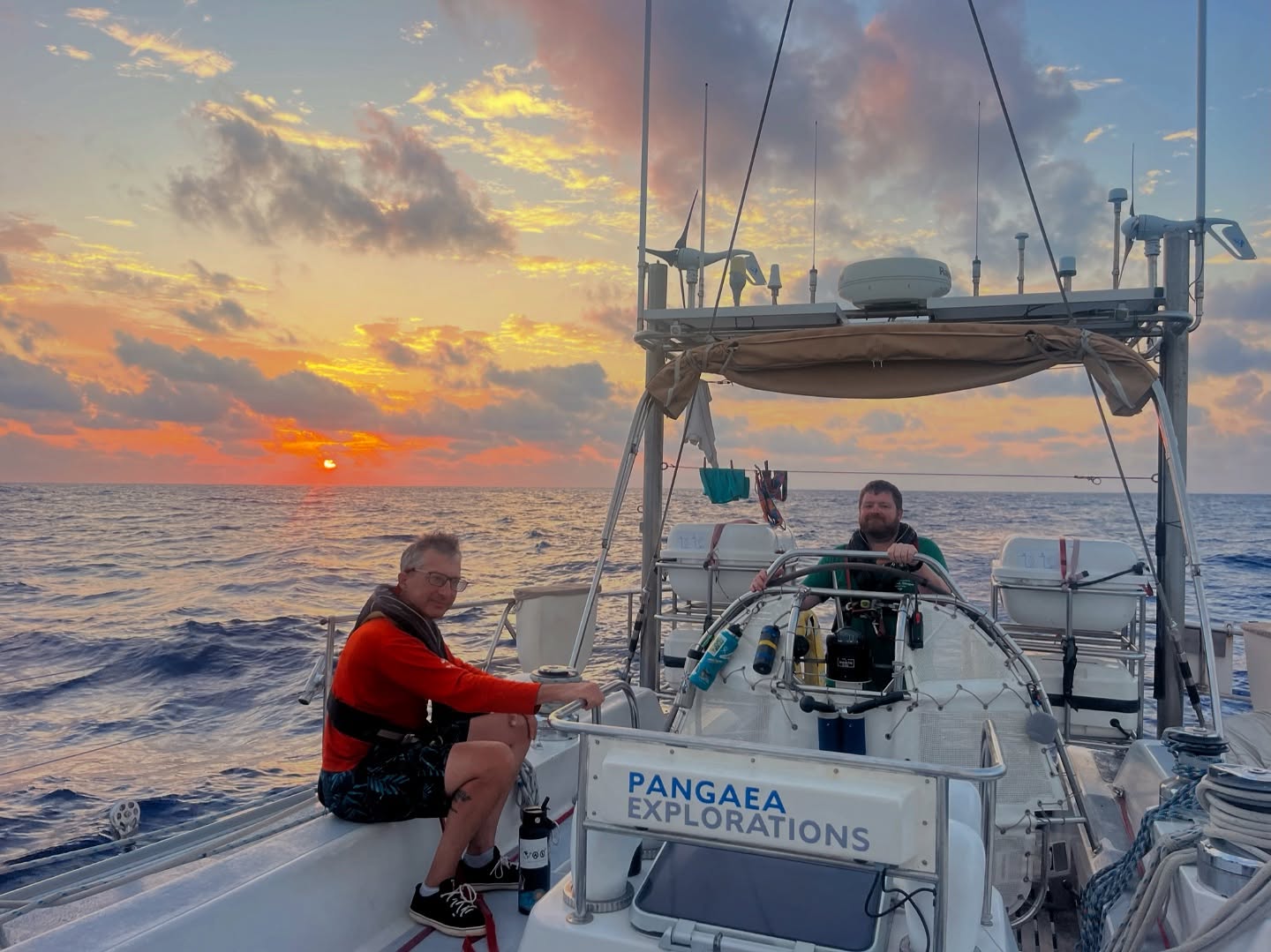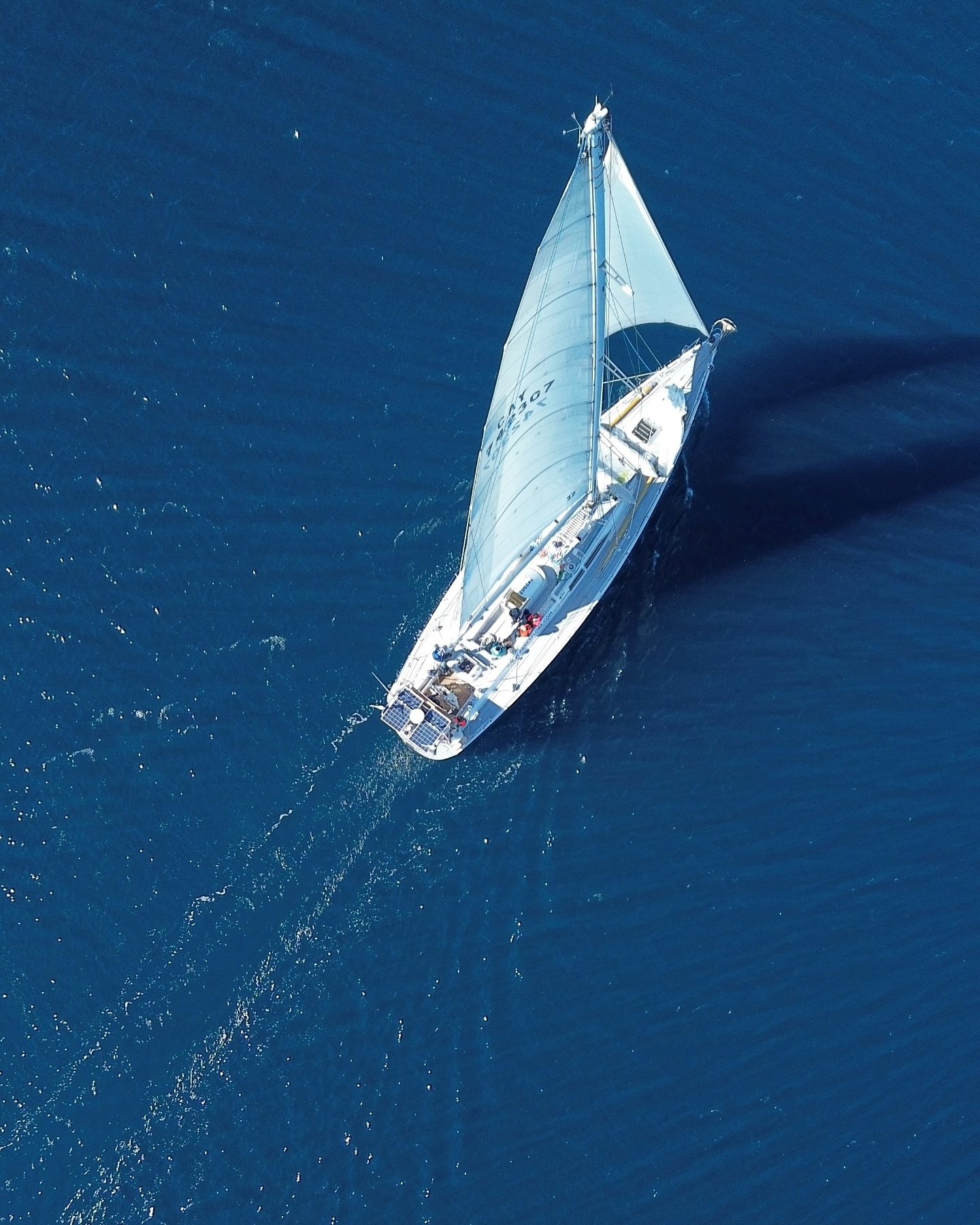Just got word in from the team that the “nets are in”. Once outside the 200nm Brazilian Exclusive Economic Zone, Sea Dragon is in international waters and is beginning the research.
Marcus is carrying two trawls this trip. The first is the standard “Manta Trawl” that has been carrying the water of ocean plastic research for over a decade now. This trawl moves slowly with a 300micron mesh net, skimming right across the surface. Generates a rich picture of the sea surface in relatively little distance. However, we are condition limited – we cannot tow above 2 kts of boat speed. The new “high speed” trawl is, relatively speaking, just that. Marcus and Anna developed and tested a prototype on their Indian Ocean crossing earlier this year. This is smaller in profile and uses a water plane to hold it in the right, surface skimming position. The advantage of this trawl is that it enables faster sampling at speeds of 7kts, much closer to boat speed. This is not going to retire the Manta, not by a long shot. However it can fill in important holes in the transect samples as we cross oceans. Obviously, our crew and even our boat would go nuts traveling 3,000 miles at 2 kts- 62.5 days! We can now intermix supporting data from the gaps and…get closer to the mythical “mega-transect”. This wondrous objective is nothing less than a non-stop continuous profile from land- to – land. The term was first coined- or at least popularized – by ecologist Michael Fay. He and his team literally walked across central Africa’s rain forest from east to west. Something like the Sea Dragon journey, he had the insight to literally slow down, and go look up close at an area we had flown or skipped over many, many times. Have a look – Mega Transect
Standing by for updates from the team-































